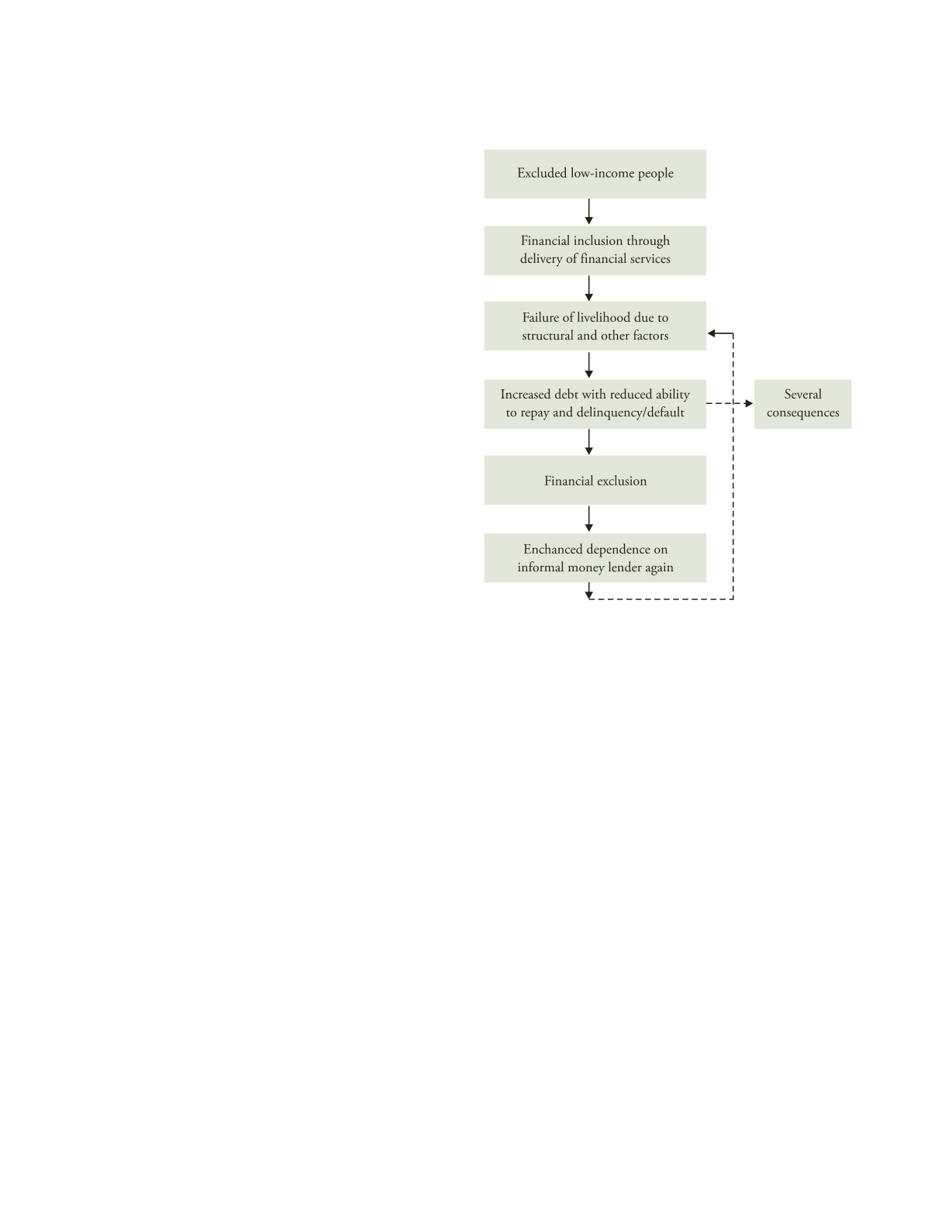
i nc lu s i ve f i nanc e
5
and business use, reinvestment of money in business and
keeping track of business income and expenditures as
being critical for strengthening financial capabilities of
entrepreneurial women.
Finally, apart from banks, financial inclusion can be
brought about by alternative agencies such as financial
co-operatives of the poor, based upon informal agencies
and channels such as SHGs, primarily of women, wherein
the decision-making power and profits are retained in the
hands of the members themselves. Indeed a strong lobby
for financial intermediation by federations of the poor
continues to challenge the orthodox view of banks that is
generally shy of lending to such community organizations
or even to involve them in a significant way as agents in
their banking operations.
1.3 AN ALTERNATIVE PARADIGM
Before discussing the extent of financial inclusion and
aspects of the financial inclusion discourse in India it may
be instructive to look more closely at the link between
financial inclusion and poverty. Once the link between
the larger poverty phenomenon and financial exclusion
is recognized there is a case for a more substantive and
broad-based agenda of development of which finan-
cial inclusion can only be a part. Arunachalam (2008)
poses the question
whether financial inclusion can help
reverse the current paradigm of inequitable development,
and if so, how is to be operationalized?
He asserts that to
truly financially include the poor requires consistent and
simultaneous mechanisms for the management of a
variety of risks and vulnerabilities, otherwise, people
who have been temporarily included would be excluded
again, and be forced into a
cycle of inclusion and exclusion
as shown in Figure 1.1.
15
Financial inclusion without
addressing structural causes that result in the failure of
livelihoods is bound to fail, and can thus not be restricted
merely to opening savings accounts and providing con-
sumption credit.
Arunachalam argues that a new paradigm of financial
inclusion is required, which reduces risk and vulner-
ability in the livelihoods of the poor, (i) resulting from
imperfect markets (ii) helps to create strong safety nets
for the poor (iii) enables the poor to pursue diversified
and migratory livelihoods and create risk-management
mechanisms and products, such as post-harvest loans and
warehouse receipts for small holders, to ensure that they
stay financially included. This necessitates that the finan-
cial inclusion paradigm becomes the integral part of an
overall livelihoods framework protecting and promoting
livelihoods. Similar to the financial capability approach,
this too involves a larger and longer vision rooted in the
economic security of the poor rather than the current
concerns of financial inclusion.
1.4 EXTENT OF FINANCIAL EXCLUSION IN
INDIA: AVAILABLE ESTIMATES
Several estimates have been made in recent years of the
extent of financial access and inclusion. The major ones
are presented in this section.
(i) The All India Debt and Investment Survey 2002
(as quoted in Christabell and Vimal Raj, 2012)
estimated that 111.5 million households had no
access to formal credit. It also showed that the lower
F
IGURE
1.1
Cycle of Inclusion and Exclusion
Source
: Arunachalam (2008).


